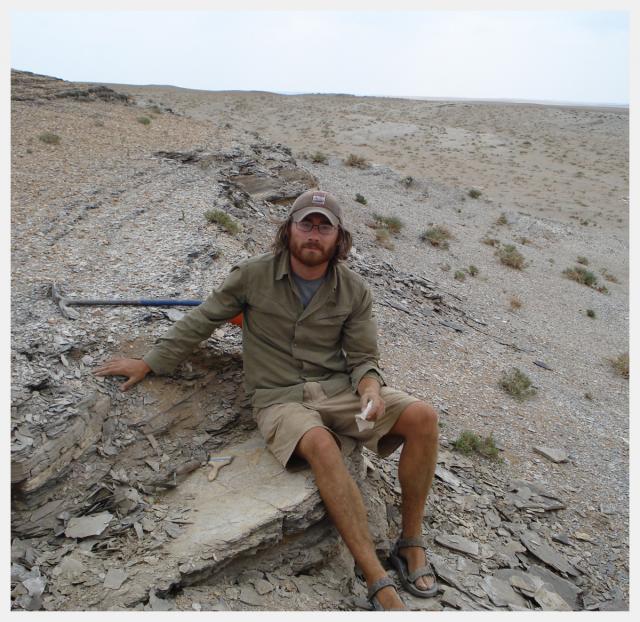 Alan H. Turner
Alan H. Turner
Professor & Chair
Education
PhD, Columbia University, 2008
M.Phil, Columbia University, 2006
MS, University of Iowa, 2004
BS, University of Cincinnati, 2001
Email
alan.turner@stonybrook.edu
Phone
631-444-8203
Visit the Turner Lab
Research : Phylogeny, systematics, and anatomy of crocodylomorphs and theropod dinosaurs; body size evolution in archosaurs, and theoretical issues in historical biogeography.
Dr. Turner works in several areas of specimen based and theoretical research. His research focuses on reconstructing the anatomy, phylogeny and life history of dinosaurs and crocodylomorphs. For both groups he does a combination of descriptive, phylogenetic and theoretical work. His work on theropods centers on the group's early history in the Triassic and the latter stages of their evolution in the Cretaceous with particular attention towards derived coelurosaurs such as dromaeosaurids and troodontids and our understanding of the sequence and pattern of acquisition of traits associated with flight. Throughout their evolutionary history theropod dinosaurs have exhibited a wide range of body sizes. From relatively small animals such as Coelophysis early in the clade’s history to the largest terrestrial carnivores like Tyrannosaurus rex to the smallest of hummingbirds, theropods have evolved to the extremes of body size. Part of Dr. Turner's work deals with characterizing the pattern of size change among theropods. In particular he is interested in understanding the basis for these size trends and miniaturization's role in feather and flight evolution. Under his co-direction with Sterling Nesbitt, Randy Irmis, and Nate Smith, work in Chinle deposits near Ghost Ranch New Mexico has produced a diverse assemblage of Late Triassic reptiles, many of which are new and are reshaping our understanding of the early evolution of theropods and their closest relatives.
Dr. Turner's work on crocodyliforms primarily deals with the phylogenetic and biogeographic evolution of Mesozoic notosuchian taxa from Gondwana and with the early evolution of animals near the origins of Eusuchia (the group exhibiting most of the "modern" croc morphologies). Detailed analyses of taxa like Araripesuchus and Mahajangasuchus from Madagascar and Shamosuchus from the Late Cretaceous of Mongolia have helped clarify portions of the crocodyliform tree. Future work will focus on continuing to resolve the crocodyliform phylogeny and explore how crocodyliform diversity and biogeography may have been influenced by global changes in climate and geography during the Mesozoic and early Cenozoic.
Dr. Turner's theoretical work focuses on developing methods for evaluating the effects sampling failure and potential means to overcome its confounding effects as well as explore new methods and techniques for the incorporation of temporal data in biogeographic analyses.

